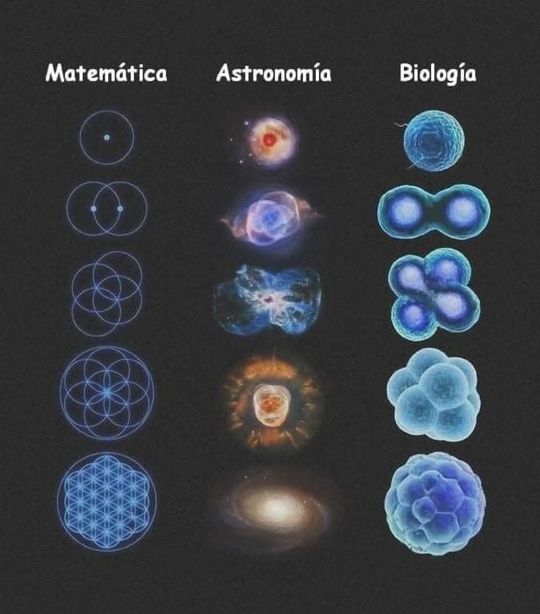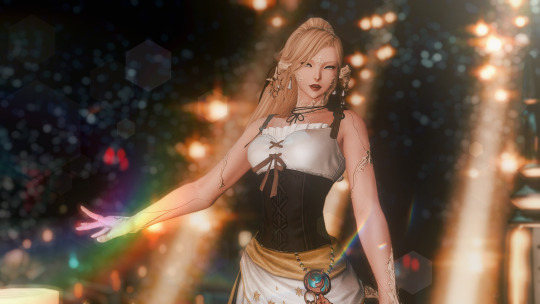#macrocosmo
Explore tagged Tumblr posts
Text
La magia e l’alchimia nel secolo dei Lumi

In questo articolo ci interesseremo della importanza della magia e dell’alchimia nel secolo dei Lumi. Può sembrare strano che anche in un secolo dominato dalla razionalità e dalla scienza trovarono posto la magia e l’alchimia. Questo però non ci deve sorprendere troppo se ha ragione Popper ad affermare che anche nella scienza moderna è presente con forza la tendenza a spiegare il mondo visibile mediante un presupposto invisibile. Se teniamo presente ciò non ci dobbiamo sorprendere se un grande scienziato come Newton ha scritto una mole notevole di manoscritti di alchimia. Tali manoscritti rimasero però ignorati fino al 1940. Dobbiamo mettere in evidenza che non si tratta di semplici studi giovanili che lo scienziato avrebbe abbandonato per dedicarsi alla ben più razionale chimica. È vero il contrario. Avendo iniziato con la chimica Newton si rese sempre più conto dell’importanza dell’alchimia quale forma di sapere in grado di darci un’immagine “in scala” delle attrazioni che governano il macrocosmo. Possiamo dire che la ricerca alchemica faceva davvero parte di quella che potremmo chiamare l’officina segreta di Newton. Newton il padre della scienza moderna rovescia se così si può dire il percorso che Comte avrebbe poi indicato al tempo del positivismo della conoscenza occidentale. Secondo Comte la scienza occidentale seguiva un percorso ben determinato partendo dalla teologia passando per la metafisica sino a giungere alla scienza positiva. Newton segue un percorso che è l’esatto opposto di quello che comte indica nella famosa legge dei tre stadi. Infatti Newton parte da una rigorosa analisi dei fatti empirici per avvicinarsi progressivamente poi con sempre maggiore convinzione a forme di spiegazione occulta in grado di eliminare problemi e difficoltà incontrati nel corso della ricerca. Per dirla in altro modo lo scienziato non può fare a meno di accedere a una dimensione oscura. Tale dimensione non va quindi considerata in contraddizione con la centralità della matematica e con il suo procedimento rigorosamente logico. Non abbiamo allora ragione di stupirci se uno scienziato come Newton mostrò di interessarsi non solo alla teologia ebraico-cristiano ma anche alle conoscenze alchemiche e alla magia naturale. Ormai la stessa fisica e l’astronomia impongono nozioni come quella di universo infinito di entità non osservabili chiamate forze proprio mentre la filosofia corpuscolare si confonde con la matematica. In breve possiamo dire che nella prospettiva di Newton scienza e alchimia rappresentano due diversi livelli di un medesimo percorso conoscitivo che dalla superficie è costretto a spingersi sempre più in profondità per svelare le arcane verità che fanno del mondo la meravigliosa creazione di Dio. Proprio in questo senso Newton definiva Dio stesso “Il Grande Alchimista”. Ma il pensiero di uno studioso per quanto importante non sempre coincide con quello di tutto un secolo. Pertanto dobbiamo dire che nonostante Newton nel suo complesso il settecento vide un progressivo abbandono degli studi magico-alchemici. Ma nonostante tutto ciò anche nell’Illuministico settecentesco si aprirono vuoti che lasciarono filtrare elementi riconducibili a concetti magici. Per fare un esempio nel settecento persistono credenze di tipo gnostico che considerano l’uomo caduto da uno stato divino e spirituale a uno materiale da cui avrebbe il compito di liberarsi per ritrovare le proprie condizioni originarie. Inoltre si diffonde lo spiritismo come possibilità di incontro con i morti. Nello spiritismo credeva anche l’emblema del razionalismo settecentesco ovvero Voltaire. Accanto all’illuminismo razionalista e laico cresce nel corso del secolo la convinzione che non sia impossibile comunicare con le grandi anime dei morti. Ancora una volta la curiosità che caratterizza la natura umana cerca di spingere avanti il carro della conoscenza talvolta riuscendo a far vivere in una stessa persona la via razionalistica e quella magico-iniziatico. Proseguendo nella ricerca di altre testimonianze del coesistere di due tendenze opposte tra loro troviamo all’inizio del secolo la pubblicazione della “bibliotheca chenica curiosa” nella quale si segnava l’immutata vitalità della tradizione alchemica. Nella prefazione all’opera il medico Manget ricorda quando avvenne nel 1685 nel laboratorio di Boyle uno sconosciuto poveramente vestito riuscì a produrre oro e Boyle dovette ammettere che era vero oro della ricerca di laboratorio. D’altro canto verso la fine del secolo si compie il passaggio definitivo dall’alchimia alla chimica grazie all’opera di Lavoisier che contribuì in modo determinante a definire la separazione tra aspetto simbolico-produttivo e aspetto sperimentale- cognitivo. Dobbiamo dire che la svolta operata da Lavoisier si produsse in forza della sua avversione accanita nei confronti della teoria ancora intrisa di spirito magico-alchemico enunciata da Stahl. Proprio a partire dal disaccordo su la teoria di Stahl in seguito all’urto tra lo spirito magico-alchemico e lo spirito scientifico la chimica in senso proprio cominciò a separarsi nettamente dall’alchimia. Separazione sancita dalla-enciclopedia che presentava le due dimensioni (scienza sperimentale e sapienza magico-alchemica) sotto due voci ben distinte: ”alchimia “ e “chimica”. Tuttavia l’enciclopedia assegnava all’alchimia un ruolo di tutto rispetto: veri alchimisti venivano infatti definiti quanti dopo essersi applicati alla chimica ordinaria si erano spinti più lontano verso l’ignoto. Quando si parla di magia alchimia e credenze gnostiche presenti nel settecento un nome soprattutto si affaccia alla mente ovvero quello del mitico Cagliostro. Cagliostro era figlio anche lui di una tradizione che evitando di rivolgersi nettamente a Dio faceva riferimento alla divinità presenti in ogni essere viventi così da rendere possibile la riconquista della perfezione originaria. Questo modo di pensare è senza dubbio prettamente gnostico. Siciliano d’origine Giuseppe Balsamo passato alla storia come Cagliostro è davvero una delle grandi figure dell’occultismo settecentesco. Iniziato alla massoneria in Inghilterra soggiornò verso il 1783 a Napoli e a Lione fondando a quanto pare in entrambe le città un rito massonico noto come “Alta Massoneria Egiziana”. Percorse quindi l’Europa esercitando ovunque le sue doti di guaritore e aprendo logge massoniche in numerose città. Condannato a morte dal Sant’Uffizio venne rinchiuso nella Rocca di San Leo avendo avuto commutata in carcere a vita la condanna a morte. Dobbiamo dire che sulla sua prigionia si svilupparono molte leggende. Una di queste narra di una sua fuga negli stati uniti d’America dove avrebbe infine condotto una vera e propria esistenza immortale. Tale leggenda sembra quasi voler dire che alchimisti e maghi cercavano di impadronirsi di un potere quasi divino e inoltre cercavano di mettersi in rapporto con vari tipi di entità soprannaturali. Detto ciò riteniamo concluso il nostro discorso sulla Magia e Alchimia nel secolo dei Lumi. Prof. Giovanni Pellegrino Read the full article
#alchimia#dimensioneoscura#Illuminismo#macrocosmo#magianaturale#massoneria#positivismo#scienzamoderna#spiritismo
1 note
·
View note
Text

Hi macrocosmos. Uh. I’ve been struggling to work on this guys since… fuck forever ago. Mostly cause I was stumped on how should I write his backstory and tie it to a… certain someone.

… Yeah with him redesigned I finally got around to finish their lore. Not… exactly fleshed out, but I got the general idea down more concrete, I think.
#ally's ocs#original character#gijinka#OC: macrocosmos#OC: Tsukuyomi ni Naru#OC: World Vanquisher#Mostly was debating over whether I should make them enemies (like in canon. Or as much as I could interpret via machine translated story)#Or allies. And if that’s the case then how should I execute that#Cause technically the 2 chars in WV and macro (Wiseman and Lichtschutze) did. Uh. Sorta become allies towards the end?#Where they (<-haven’t read the story in months) like. Call a truce to go against the girl in 8-EM (?)together#In what is basically a “an enemy of my enemy is my friend” moment#And then Licht fucking dies nuking the girl like. Damn bro.#Anyways uh. I do keep some details. But it’s mostly canon divergent I think
22 notes
·
View notes
Text

Todo está conectado.
76 notes
·
View notes
Note
My, my! Now, this is surprising! You've become friends with Bede, have you? Surprising indeed... now, I hesitate to ask this, but just how did that come about? Last I was aware the child wasn't particularly fond of you.
I apologize for not bringing a gift for your big day, by the way. I don't exactly have much to give away anymore, ahaha.
@macrocosmos-social
Hello Rose.
Bede is friends with Marnie, which is how I came t'know him better. Turned out we had a few interests in common, like music, and I s'pose he decided to make me his acquaintence. Good kid, very talented- and not just in battlin', and has a good head on his shoulders.
M'really proud of the person he's become, an' the hardships he overcame...
#Macrocosmos-social#answered asks#piers answers#piers rp#pkmn rp#chairman rose rp#//that last comment was in reference to Rose btw
15 notes
·
View notes
Text

that means!! i've managed to become a—wait, they're calling it a... sexlegend?? oh, i see...
#ffxiv#hrothgar#gpose#content clearing chronicles#i didn't know what to write for this i've been awake for too long and i had to participate in physical labor#it was nostalgic going back through my old clear screenshots in order to get the glamours i used in them#and then having to reference screenshots for what abilities would be usable back then to use for poses#ucob is using lightspeed#uwu is using nocturnal sect (rest in peace)#tea is using synastry#dsr is using exaltation#top is using macrocosmos#fru is using sun sign#and the background is deltascape v4.0 savage#i'm kind of in disbelief that i made it here#it was only a few years ago i was browsing recruitment posts and getting discouraged when all the other asts had much more attractive logs#but then fc members and friends asked if i wanted to try#and... now we're here??#my brain is mush my body is exhausted and my emotional state is fragile#i'm gonna post this and then i need to go lie down
5 notes
·
View notes
Note
Ahh, I see. Yes, I see now. You have a crush on young Bede, don't you! Why, that would quite handily explain why you've been so fiercely protective of him! I completely understand. I certainly don't begrudge you for it.
In fact, in order to prove my amiability, allow me to give you a little "hint": He's quite enraptured by talk of business and economy. I seem to recall him hanging on my every word whenever I spoke about my job to him. I found those interests of his to be quite charming, to tell the truth
@macrocosmos-social
huh, I thought I made it obvious I wanted nothing to do with you.
it's pretty bold to make assumptions about someone you barely know, and that refers to me and Bede.
number one, why do you care? whether or not I have romantic feelings for Bede doesn't determine if I'm going to defend his honor, I'd lay down life and limb for any of my friends, because they're my FRIENDS.
and two, no he's not, he's told me personally that he finds it to be exhausting drivel.
I'd give you a hint of your own but something tells me you wouldn't even absorb it.
7 notes
·
View notes
Text




Third Suns + Macrocosmos.
#(from a few days ago btw)#(art)hesia#arthesias ocs#rhymix: artwork#rhy(sun): third sun (oc)#rhy(citizen): macrocosmos (oc)#oc#ocs#oc art#art#traditional art
2 notes
·
View notes
Text
fucking hell alternate universe R*se posts have taken over my dash shut the fuck up and get lost in the distortion like the other one
#penny posting#dash commentary#tw: chairman rose#rotomblr#pokeblogging#rotumblr#pokemon rp#//helpp everything is macrocosmos social- I mean I follow him but where did the other ones go???
2 notes
·
View notes
Text
La magia nel pensiero di Marsilio Ficino

Come ogni altro aspetto della cultura anche la magia conosce una sorte di esplosione nel periodo rinascimentale. In tale periodo iniziando dall’ Italia una generale ansia di rinnovamento percorre l’Europa. L’io vuole sempre più decisamente farsi tutt’uno con un mondo in cui sente di dover ormai condividere sino in fondo le sorti. Nel Rinascimento vennero rese disponibili a tutti opere di un passato mai davvero conosciuto. Per fare un esempio Marsilio Ficino traduce in latino varie opere tra cui i 14 trattati del “Corpus hermeticum” attribuiti a Ermete Trismegisto che venne ritenuto un sapiente dell’antico Egitto. Dobbiamo mettere in evidenza che nel Rinascimento anche l’universo magico subì l’influsso dell’atmosfera di quel periodo storico e divenne la fucina di una straordinaria fioritura di idee opere e indicazioni di altissimo valore teoretico. Pertanto il mago rinascimentale offrì alla cultura europea già in ebollizione uno slancio nuovo e sorprendente influenzando una straordinaria rinascita dell’arte della filosofia e della scienza. Pertanto nel Rinascimento la magia fu sempre sul punto di risolversi in arte in scienza in psicoterapia e in religione. Dobbiamo dire che nel Rinascimento teoria e pratica sono sempre più rigorosamente intese come un unico plesso sapienziale. Per tale ragione nel Rinascimento risulta assai difficile separare chiaramente alchimia, magia, astrologia, medicina e filosofia. Nel periodo rinascimentale era considerato vero sapiente non solo chi sapeva ma anche chi agiva coniugando pratica e teoria. In tale periodo storico la natura era concepita come un essere animato.

Pertanto per intervenire efficacemente sul mondo bisognava sapersi rapportare a un’anima mundi che reagiva alle azioni degli uomini secondo principi di vita e dinamicità suoi propri. Per il mago rinascimentale tutto parlava di Dio. Infatti mondo uomo e Dio costituivano un unicum caratterizzato da relazioni manifeste e relazioni nascoste che il mago sapiente doveva conoscere perfettamente. Nella sua anima l’uomo secondo il sapiente rinascimentale rifletteva il mondo, infatti l’uomo era considerato un microcosmo mentre l’universo un macrocosmo. Di conseguenza tutto era connesso con tutto cosicché ogni cosa era considerata la nota di una sinfonia cosmica da decifrare ed interpretare. In definitiva il mago rinascimentale attraverso immagini definite da una simbologia che proveniva da diverse tradizioni il mago evocava gli spiriti che animavano le realtà dell’universo caratterizzato da una simpatia cosmica. Come tutti sanno l’influsso platonico e neoplatonico dominava anche la magia rinascimentale. Dopo tale introduzione prenderemo in considerazione il pensiero intorno alla magia di Marsilio Ficino. Egli si dedicò a tradurre tutto Platone e i platonici e avendo tradotto anche Ermete Trismegisto sviluppò quella teologia platonica che giocò un ruolo fondamentale nel suo pensiero sulla magia Nel pensiero di Marsilio Ficino per farci illuminare dalla luce divina era necessario innanzitutto liberarsi dagli inganni dei sensi. In generale possiamo dire che Ficino difese le pratiche magiche ma a determinate condizioni. Per esempio egli sostenne che i demoni presenti nelle statue (secondo una tradizione magica che si può far risalire fino all’antico Egitto) dovevano essere adoperati soltanto come mezzi dal momento che il loro uso sarebbe diventato illegittimo se venivano utilizzati come dei. Ficino era molto attento nel difendere il sapere magico anche se era turbato da molte perplessità riguardanti soprattutto l’uso dei talismani. L’autore rinascimentale per essere legittimato nelle proprie teorie citava spesso Tommaso d’Aquino. Marsilio Ficino pure con tutte le sue perplessità credeva nell’esistenza dei demoni e nelle loro capacità di influire sullo spirito e sul corpo degli uomini. Non esiste nessun dubbio che tale autore rinascimentale riconosceva innegabilmente una funzione positiva alla magia almeno in una sua opera ovvero il “De Vita”. In tale opera Ficino richiama alla memoria i Maggi che portarono doni a Gesù Cristo. Nell’opera di Marsilio Ficino è senz’altro presente una “contaminatio “di astrologia e religione Cristianesimo e Paganesimo. L’autore rinascimentale nel “De Vita” non dimenticò assolutamente gli aspetti più pratici della magia. Tale autore cercò in ogni modo di trovare una mediazione tra dottrine diverse e spesso antitetiche. La stessa volontà di mediare tra dottrine diverse e spesso antitetiche la si ritrova nel ruolo che Ficino attribuisce alle immagini. Esse giocavano un ruolo rilevante nella tradizione magica dell’antichità ruolo ripreso dal neoplatonismo dei primi secoli dell’era cristiana e dal magismo arabo medievale. Continuando a prendere in esame sempre il De Vita di Marsilio Ficino dobbiamo mettere in evidenza che egli riesce a cogliere uno degli aspetti più importanti della dimensione magica la cui legittimità è stata solo da poco tempo riconosciuta dalla scienza medica ufficiale sotto la spinta di una prospettiva a indirizzo omeopatico. In definitiva l’umanista italiano comprende che in questo complesso gioco di influssi e relazioni tra astri immagini entità soprannaturali e vita dell’essere umano un ruolo non indifferente deve essere giocato dal potere della immaginazione. Appare evidente che ancora un passo e Ficino si sarebbe trovato in pieno nell’ambito delle teorie moderne sulle malattie psico somatiche. In ogni caso la cosa non deve sorprendere poiché nel pensiero dell’umanista italiano mente e corpo non sono due realtà distinte e autonome ma sono strettamente collegate. Inoltre per l’autore in questione l’efficacia dell’azione magica viene inscritta nel contesto di una relazione ben più complessa di quella individuata fino ad allora. Infatti nella realizzazione dei prodigi di natura magica a svolgere un ruolo centrale non sono soltanto l’azione del mago e la configurazione degli elementi magici. Per Ficino è importante anche la disposizione di chi subisce il rito magico. Inoltre tra il mondo (ordinato da Dio) e l’agire del mago non poteva non esistere secondo Ficino un terzo elemento ovvero la disposizione di chi è oggetto dell’azione magica. Per dirla in altro modo nell’azione magica quello che appare davvero sorprendente a Ficino è l’impossibilità di ricondurla ad un rapporto univoco. In pratica possiamo dire che quella teorizzata da Ficino è per così dire una magia particolarmente consapevole ed attiva. Egli coglie e articola una molteplicità di elementi presenti nella dimensione magica che vibrano in seguito all’esistenza di una simpatia universale. In effetti Ficino scorge ed individua qualità occulte nelle cose qualità che rinviano all’azione e all’influenza dei pianeti. Ma secondo l’umanista italiano perché si abbia un fenomeno magico non basta disporsi ad un uso meccanico di tali qualità occulte delle cose nonché dei loro rapporti con i pianeti. Per dirla in maniera sintetica la magia teorizzata da Ficino è nel senso più esatto della parola una magia naturale poiché si basa sul presupposto che siano attivate nei riti magici senza nessuna esclusione tutte le forze della natura di volta in volta messe in gioco. Concludiamo tale articolo ribadendo che agire ed essere agiti, azione e passione, non sono nettamente distinguibili nella magia teorizzata da Marsilio Ficino. Prof. Giovanni Pellegrino Read the full article
#animamundi#Corpushermeticum#ErmeteTrismegisto#LuceDivina#macrocosmo#magiarinascimentale#MarsilioFicino#microcosmo#rinascimento
0 notes
Text
Universal Patterns and the Cosmos
This is where things start to really come together. Metatron’s Cube isn’t just a mystical symbol or abstract concept—it’s a reflection of universal patterns that govern everything, from the smallest atomic structure to the grand cosmic formations. By understanding these patterns, we gain insight into the very blueprint of creation, energy, and existence.

What Are Universal Patterns?
Before we dive into Metatron’s Cube, we need to understand the idea of "universal patterns." These are the repeating, fundamental designs that manifest throughout the natural world and the cosmos. They aren’t just random—they form the very structure of reality, whether we're talking about physical space, energy, or life itself. These patterns transcend scale, showing up in everything from the spirals of galaxies to the arrangement of petals in flowers.
Universal patterns reveal the deep interconnectedness of all things, offering a map of the order that underlies both the spiritual and material worlds. Metatron’s Cube, in its essence, serves as a key to understanding these universal patterns and how they influence the cosmos.
Metatron’s Cube and the Cosmos
Now, let’s break down how Metatron’s Cube itself functions as a cosmic map. This sacred geometric figure is not just a symbol—it’s a geometric representation of how the universe is structured. Within it are Platonic Solids, which are the five basic geometric shapes that ancient philosophers believed formed the very building blocks of the universe.
These Platonic Solids include:
Tetrahedron (Fire): This shape has four triangular faces and is considered the building block for the element of fire. The tetrahedron represents transformation, passion, and creation. Hexahedron (Cube - Earth): The cube has six square faces and is associated with the element of earth. It represents stability, structure, and the material world. Octahedron (Air): With eight triangular faces, the octahedron represents the element of air. It symbolizes clarity, balance, and the mental and emotional realms. Icosahedron (Water): This shape has twenty triangular faces and is associated with the element of water. The icosahedron represents flow, adaptability, and emotional depth. Dodecahedron (Ether/Spirit): The dodecahedron has twelve pentagonal faces and is tied to the element of ether or spirit. It represents spiritual growth, higher consciousness, and the connection to the divine.
These Platonic Solids are embedded within Metatron’s Cube, and they form the foundation for understanding how the universe works on both a physical and spiritual level. These shapes exist not only in our understanding of reality but also in the physical structure of the universe, guiding everything from the formation of atoms to the creation of stars.
Sacred Geometry and the Cosmos
Sacred geometry is the study of how these fundamental geometric shapes and patterns show up across all scales in nature and the cosmos. Whether we’re looking at the microscopic world of atoms or the vast galaxies in space, sacred geometry provides the organizing principle behind all matter and energy.
The Golden Ratio and Spirals One of the most well-known manifestations of sacred geometry is the Golden Ratio (1.618). It’s a mathematical constant that shows up in natural forms like spirals, fractals, and growth patterns. It can be seen in everything from the spirals in seashells to the arms of galaxies. The Fibonacci sequence (a series of numbers where each number is the sum of the previous two) is closely linked to the Golden Ratio and often governs the growth patterns of plants, flowers, and even the arrangement of leaves. This ratio is a core part of sacred geometry, and you’ll find its influence embedded within Metatron’s Cube. The Shape of the Cosmos—Planetary Orbits and Sacred Geometry When we look at the larger scale of the cosmos, sacred geometry reveals itself in the orbits of planets and the structure of galaxies. The elliptical orbits of planets, for example, can be understood through geometric principles that reflect the same patterns seen in Metatron’s Cube. These orbits aren’t random; they follow a structure that mirrors the design of sacred geometry. Even the way galaxies spiral—many in perfect Fibonacci spirals—shows how sacred geometry manifests in the largest structures of the universe. The interconnectedness of the orbits of planets, the movement of celestial bodies, and the formations of galaxies are all influenced by the same universal patterns that Metatron’s Cube embodies.
Sacred Geometry in Nature
Now that we’ve explored the grand scale of the cosmos, let’s zoom in and look at how these universal patterns show up in nature on Earth. Nature is literally built using sacred geometry, and Metatron’s Cube mirrors these natural designs at every scale.
Cell Division and the Flower of Life In biology, the process of cell division (mitosis) follows a precise geometric pattern. In the early stages of cell division, the shapes that emerge mirror the Flower of Life, a sacred geometric symbol that is directly linked to Metatron’s Cube. This symbol consists of overlapping circles and is considered to represent the foundation of all life. The formation of new cells follows this pattern, and it’s considered a manifestation of the energetic blueprint of creation. Crystals and Snowflakes Sacred geometry isn’t confined to biology; it shows up in the structure of crystals and even in snowflakes. Crystals like quartz grow in hexagonal shapes, which are part of Metatron’s Cube. This hexagonal symmetry, with its repeating six-sided structure, is a perfect example of sacred geometry in action. Snowflakes, with their symmetrical six-point design, are another example of how sacred geometry shapes the natural world. Both snowflakes and crystals adhere to the principles of sacred geometry, specifically the patterns found within Metatron’s Cube. Plant Growth and Fibonacci Sequences Have you ever noticed how flowers often have a specific number of petals? Some common examples include 3, 5, 8, 13, or 21 petals—numbers that show up in the Fibonacci sequence, which is inherently tied to the Golden Ratio and sacred geometry. Plants follow these patterns for efficient growth and energy distribution. For example, the arrangement of leaves on a stem or petals in a flower often follows the Fibonacci spiral, which is a direct reflection of the patterns embedded within Metatron’s Cube.
Why Metatron’s Cube Matters
Metatron’s Cube is far more than just a symbol; it is a map that reveals how everything in the universe is interconnected. The sacred geometry within Metatron’s Cube mirrors the fundamental structure of both the material and spiritual realms. It shows us that the universe is not chaotic or random, but governed by underlying patterns that repeat and scale at every level of reality.
By studying Metatron’s Cube, we begin to understand that the physical world—the plants, the animals, the planets, the stars—is all part of a unified, harmonious design. These universal patterns are not just theoretical ideas; they are the building blocks of all creation, linking everything from the smallest particles to the largest structures in the universe.
Using Metatron’s Cube for Balance and Healing
Since Metatron’s Cube reflects the fundamental design of the universe, it can be used as a tool for balance, healing, and spiritual growth. By meditating on these sacred geometric shapes, we align ourselves with the natural energy and patterns that exist in the world around us. Each of the Platonic Solids in Metatron’s Cube represents a different aspect of the universe and human experience, which we can tap into for specific purposes.
Tetrahedron (Fire) This shape represents passion, transformation, and creation. Meditating on the tetrahedron can help ignite your inner fire and stimulate creativity and energy. It’s also useful for overcoming obstacles and sparking change in your life. Hexahedron (Cube - Earth) The Cube is all about stability, grounding, and the material world. It can help you feel centered and secure, bringing balance when you're feeling scattered or overwhelmed. It represents the foundation upon which the physical world is built, and meditating on it can help you find solid ground in turbulent times. Octahedron (Air) The Octahedron represents clarity, balance, and mental focus. It’s great for calming your thoughts, improving decision-making, and bringing emotional equilibrium. It can also help clear mental blockages, allowing you to see situations from a higher perspective. Icosahedron (Water) This shape is connected to emotional flow, adaptability, and flexibility. The Icosahedron helps open up emotional channels, fostering emotional healing and fluidity in relationships. It’s useful when you need to release emotional blockages or adapt to change. Dodecahedron (Ether/Spirit) The Dodecahedron is associated with spiritual growth, wisdom, and higher consciousness. Meditating on this shape can deepen your connection to the divine, helping you align with your higher self and experience spiritual clarity and insight.
By focusing on these shapes during meditation or energy work, you can realign your inner state with the natural rhythms of the universe, creating balance and harmony in your life.
The Metatron’s Cube as a Cosmic Map
Metatron’s Cube is not just a symbolic figure—it is a cosmic map that reveals the sacred patterns governing both the material and spiritual worlds. From the microcosm of cellular division to the macrocosm of the cosmos, sacred geometry shapes everything around us. By understanding these patterns and using Metatron’s Cube as a tool, we can align ourselves with the deeper structure of the universe, fostering balance, healing, and spiritual growth. The Cube offers us a way to connect with the flow of cosmic energy, making it a powerful tool for those who seek to understand the deeper mysteries of existence.
#metatron#metatron's cube#studyblr#esoteric studies#occultic studies#occult#esoteric#sacred geometry#microcosmos#macrocosmos#cosmos#universe knowledge#sacred symbols#sacred knowledge#sacred#information
4 notes
·
View notes
Text

*ragdolls down the stairs and fucking dies* damn this feels like that one time I fell down the stairs when I was 4
(Sequel to this)
#ally's ocs#original character#gijinka#OC: Tsukuyomi ni Naru#OC: macrocosmos#OC: World Vanquisher#This is making me remember why I was such a comic maker hater lmfao#I tried doing comics on and off for years… latest attempt was probably when I did one for a friend r1999 fanfic-#And that one took like 12 hours >_<#The little Narus are fun to make tho. Baby has a first thought#Also now that I think abt it. “Paperwork” isn’t… exactly the best word here I think#Consider the “paper” in Chuni is more holograms than actual papers#But. It’s 3 am. I am going to bed this is good enough
11 notes
·
View notes
Text




macrocosmos.
#moments in time#emmermods#cryptidmods#who made the spell effects for macrocosmos this pretty#should be illegal#ffxiv gpose#ffxiv screenshots#au ra raen#warrior of light#tbh I was just playing with sparklies lmao
44 notes
·
View notes
Text
i think the reason i love getting zodiark or barbariccia in my trials roulette is because i can finally do my job as a healer 💀
#i was doing hydaelyn with funny daniel yesterday and my co healer was just annoying#like. they have 'ultimate legend' title so i expect them to know a thing or two about other jobs#but nah. i use macrocosmos before big raid wide damage and they suddenly decide to spam cure 3 what the heck#they also rescued me in a random spot at some point 💀#i guess they didn't like funny daniel 😔#endwalker spoilers#(bc boss names)
5 notes
·
View notes
Text
why's the music in the rose tower so good.......
#the one thing macrocosmos does right istg#this is why i love this part. sick as hell background music all the way
3 notes
·
View notes
Text
Tudo é Éter, Einstein estava errado e o GPS?!?
A matéria é apenas uma ideia, uma projeção da nossa consciência, e é energia potencial do Éter, a fonte original de tudo! O éter é definido como um campo de energia potencial de vibração de frequência super alta que obedece à dinâmica de fluxo, ou vetores de fluxo de energia congruentes aos quais é definido na dinâmica de fluidos, em outras palavras, tem qualidades de líquido. Renato Cunha –…

View On WordPress
#a fonte original de tudo! Renato Cunha Stylo Urbano#A matéria é energia potencial energy#A matéria é uma ideia projeção nossa consciência#Air ar#Air pure ar puro”#Albert Einstein físico fraude piada fake#alma manifestação#almas seres ghosts fantasmas#and divers other subjects Siris#animal spirit and causality in George Berkeley’s Siris: an imaterialist vision of the analogy between macro and microcosmos#antigos gregos esfera celestial#ato de realizar dream sonho#Éter#Éter meta vontade#Éter quinto elemento# Óptica de Isaac Newton (1643-1727)# átomo de oxigênio dois radicais orgânicos#éter de petróleo alta volatilidade éteres#éter etílico líquido incolor volátil inflamável#éteres realidades sutis#Berkeley Macrocosmo Microcosmo Éter Causalidade#bible Bíblia As águas do céu sky water#campo de energia potencial vibração de frequência super alta#ciência moderna nova reforma energética#cientista#clock relógio atômico satélite GPS#composto orgânico estrutura molecular#concepção do éter luz light#destilação fracionada#dinâmica vetores de fluxo de energia congruentes dinâmica de fluidos
1 note
·
View note

